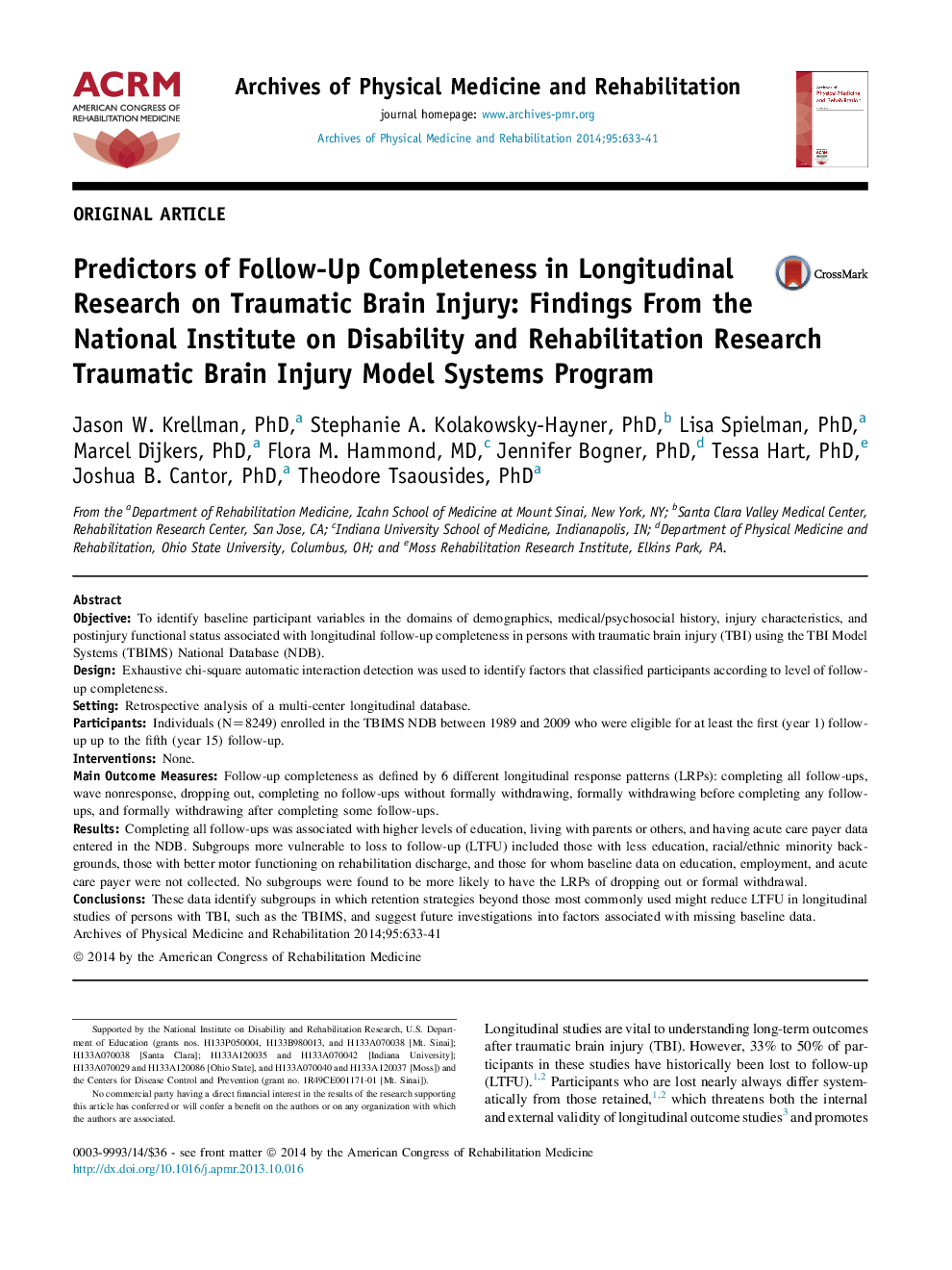| کد مقاله | کد نشریه | سال انتشار | مقاله انگلیسی | نسخه تمام متن |
|---|---|---|---|---|
| 3448336 | 1595698 | 2014 | 9 صفحه PDF | دانلود رایگان |
ObjectiveTo identify baseline participant variables in the domains of demographics, medical/psychosocial history, injury characteristics, and postinjury functional status associated with longitudinal follow-up completeness in persons with traumatic brain injury (TBI) using the TBI Model Systems (TBIMS) National Database (NDB).DesignExhaustive chi-square automatic interaction detection was used to identify factors that classified participants according to level of follow-up completeness.SettingRetrospective analysis of a multi-center longitudinal database.ParticipantsIndividuals (N=8249) enrolled in the TBIMS NDB between 1989 and 2009 who were eligible for at least the first (year 1) follow-up up to the fifth (year 15) follow-up.InterventionsNone.Main Outcome MeasuresFollow-up completeness as defined by 6 different longitudinal response patterns (LRPs): completing all follow-ups, wave nonresponse, dropping out, completing no follow-ups without formally withdrawing, formally withdrawing before completing any follow-ups, and formally withdrawing after completing some follow-ups.ResultsCompleting all follow-ups was associated with higher levels of education, living with parents or others, and having acute care payer data entered in the NDB. Subgroups more vulnerable to loss to follow-up (LTFU) included those with less education, racial/ethnic minority backgrounds, those with better motor functioning on rehabilitation discharge, and those for whom baseline data on education, employment, and acute care payer were not collected. No subgroups were found to be more likely to have the LRPs of dropping out or formal withdrawal.ConclusionsThese data identify subgroups in which retention strategies beyond those most commonly used might reduce LTFU in longitudinal studies of persons with TBI, such as the TBIMS, and suggest future investigations into factors associated with missing baseline data.
Journal: Archives of Physical Medicine and Rehabilitation - Volume 95, Issue 4, April 2014, Pages 633–641
